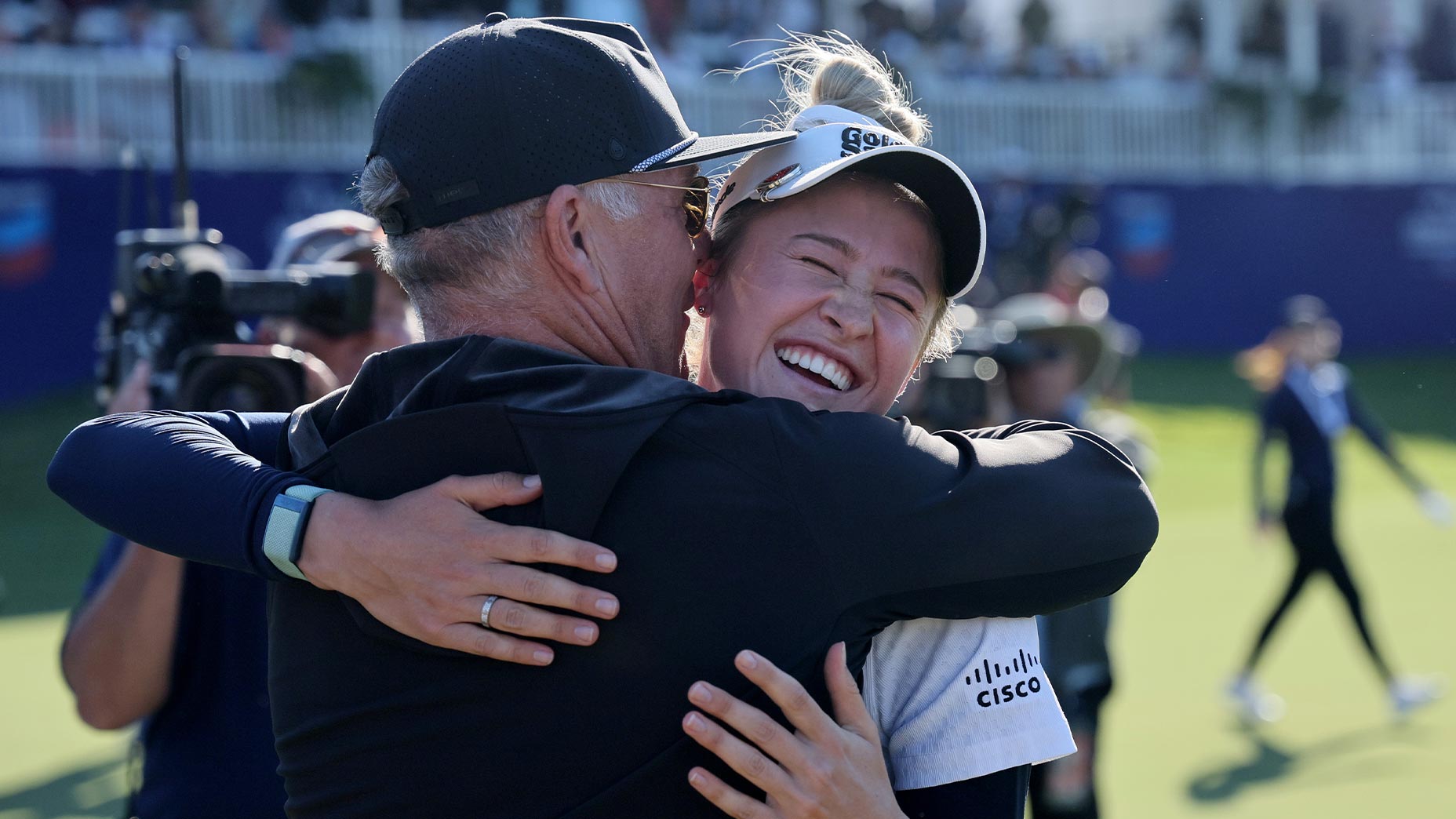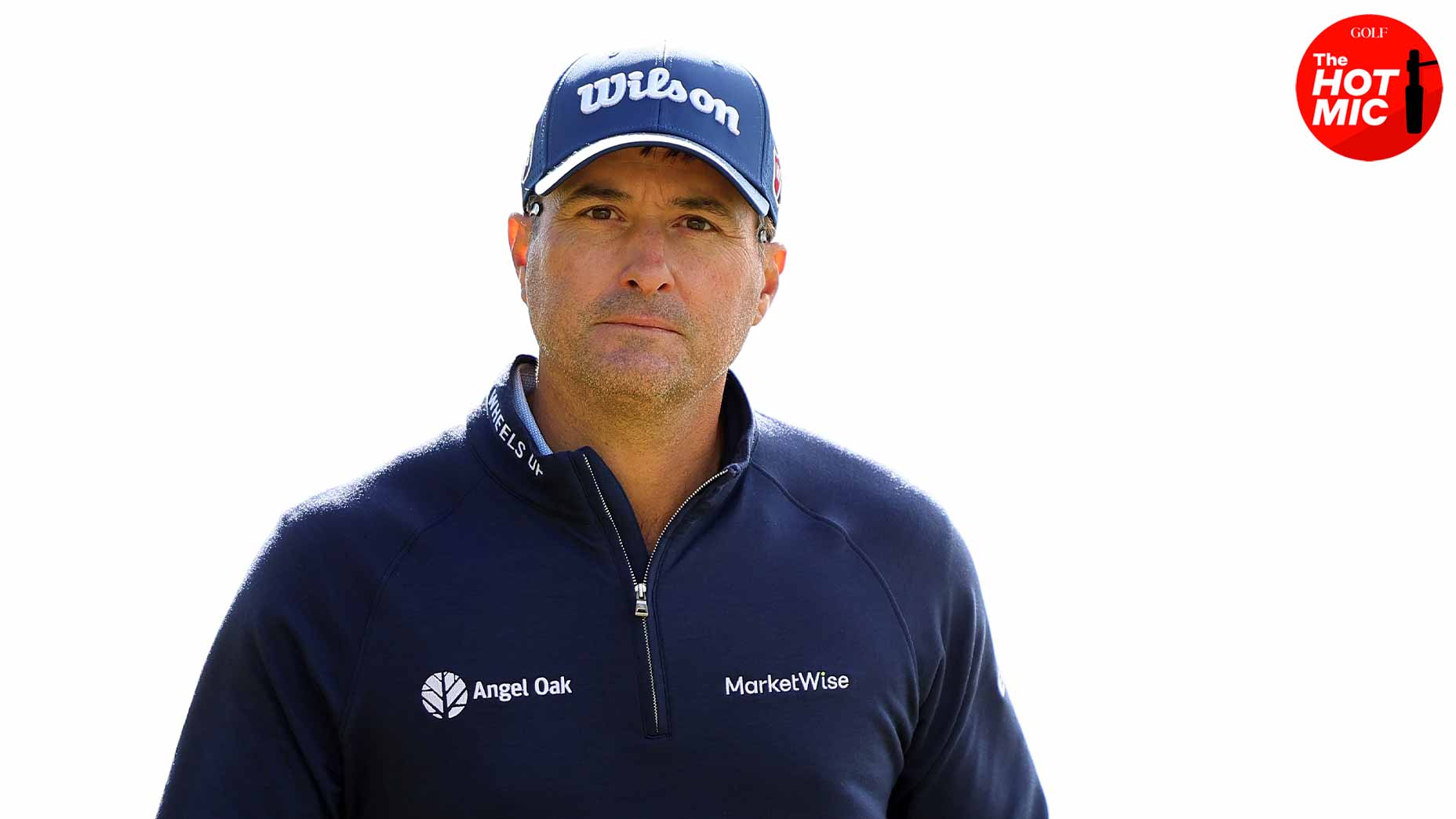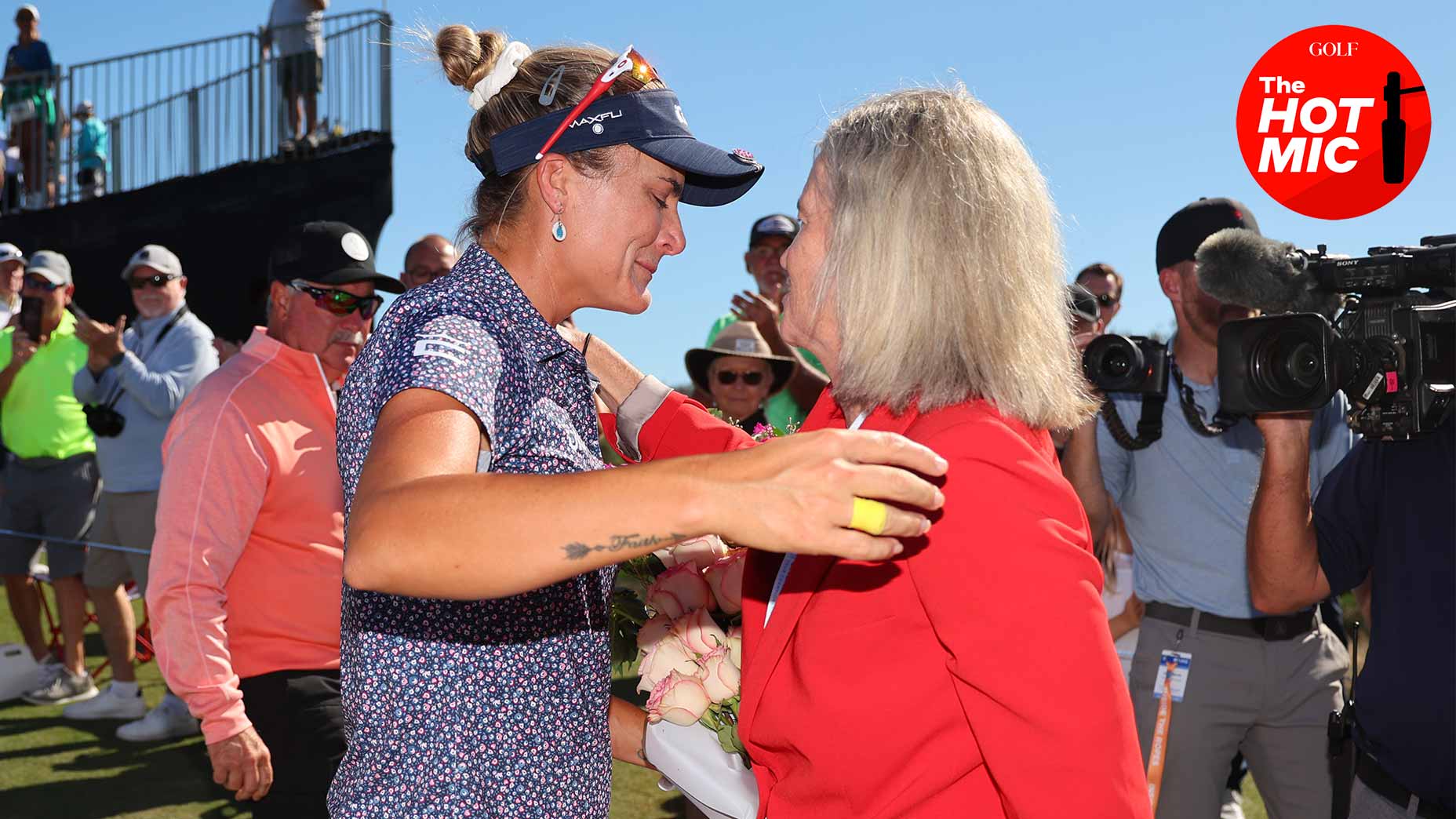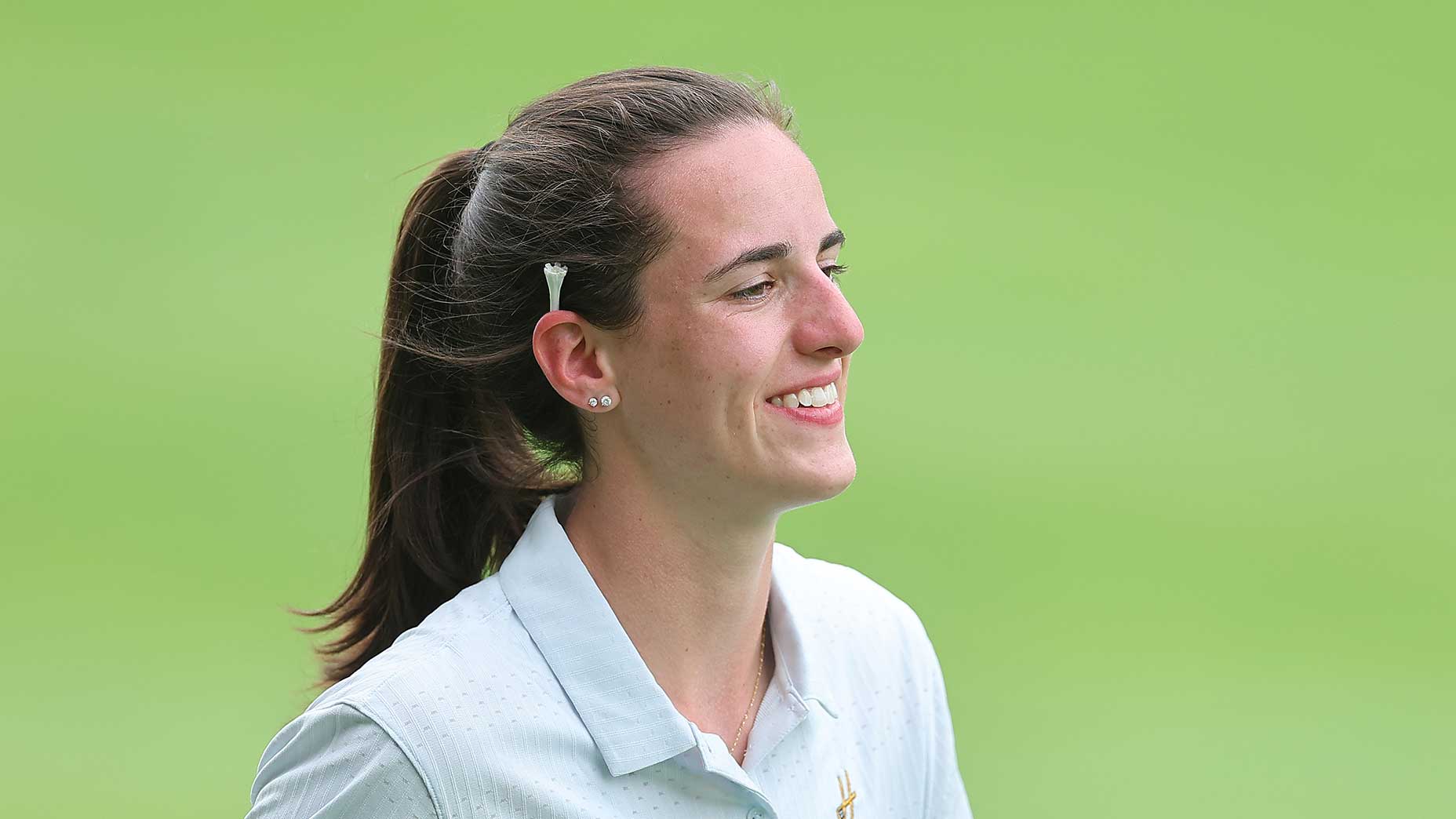Why Nelly Korda was right to call out TV coverage after historic victory
- Share on Facebook
- Share on Twitter
- Share by Email

Nelly Korda's Chevron victory sparked a debate about women's golf on TV.
Getty Images
On Sunday evening, golf history welcomed a new young star. Her name is Nelly Korda.
As her tournament-ending birdie poured into the middle of the 18th hole at the Chevron Championship, Korda joined Nancy Lopez and Annika Sorenstam as the only players ever to win five straight LPGA events. Korda, 25, placed a unique cherry on top of that achievement by nabbing her fifth straight at the Chevron, annually the first major on the LPGA calendar.
The win launched Korda, already the world’s top-ranked player, into another orbit — representing the fulfillment of the promise that made her one of the most anticipated young stars in the sport close to a decade ago. But it also came in stark relief to the fanfare that has surrounded the recent meteoric rise of another women’s star, Iowa’s Caitlin Clark, who captivated the nation during a championship-game run with the Hawkeyes women’s basketball team.
While Clark’s run resulted in historic television ratings for women’s basketball and a national conversation around women’s sports, Korda’s run — which has covered almost the same stretch as the entirety of the 2024 WBB season — hardly registered outside of the niche world of golf. Later on Sunday, after her victory, Korda was finally asked for her opinion why.
Below is an extended sampling of this week’s Hot Mic Newsletter on Korda’s insightful answers, and on the greater conversation around women’s golf on television. If you’d like to subscribe to the Hot Mic Newsletter to get exclusive news and insights like this sent directly into your inbox each week, check out the link here or click the box below.

NICELY!
Shortly after notching a historic fifth-straight win at the Chevron Championship, Nelly Korda offered a friendly (but stern) message to golf’s TV networks:
“We need a stage. We need to be on primetime TV, and we need to showcase the talent we have out here, which is a lot. We need the support from not just the crowds but the television networks.”
Korda’s message was clear, even if she risked igniting another round of whataboutist retorts from the “nobody cares” segment of the golf internet: For women’s golf to succeed on television like men’s golf, it needs to be shown on television like men’s golf. As for that insipid argument about floundering ratings on small cable networks being proof of women’s golf’s inherent inferiority, Korda seemed to be arguing that the solution to women’s golf’s popularity woes was neither the chicken (major TV networks) nor the egg (women’s golf), but rather the frequency of the two working together.
EXCUSE ME?
That message might have sounded strange, particularly on the heels of NBC carrying two straight days — and at least 7 hours — of nationally televised tournament coverage from the “Chev.” But anyone watching the telecast knew the coverage was badly wounded relative to a traditional men’s weekend tournament round.
There was hardly any technology worth showing, and only a handful of camera crews were on site to cover the action — a pittance next to the coverage CBS gave Scottie Scheffler’s victory in Hilton Head. On Sunday, flipping channels from CBS’s coverage to NBC’s was a bit like going from 1.5x speed to .5x.
Thankfully, Korda was in the final group and leading come Sunday afternoon, so NBC’s cameras didn’t miss much. But the investment was clearly lacking.
NBC’s DEFENSE…
Is salient. Carlton Woods, which hosts the Chevron, is a spread-out tournament layout, which creates all manner of challenges for TV productions utilizing miles worth of fiber optic cable and strike crews needing to set up tower coverage. It’s hard to get set up for tournament play in the best of circumstances, and adding additional layers of production glut adds further cost and time to the NBC team.
NBC is also not in control of pace of play, which — at a shade over six hours on Sunday — was horrendous and surely contributed to the slow-motion feel of the Sunday telecast. Also, the fact that Korda was so far distanced from the remainder of the rest of the field for most of Sunday’s round, and the historical context with which she was competing, left the broadcast giving her Tiger-like levels of airtime. Considering she was quick to play, that meant plenty of waiting.
WHY WE DON’T HEAR KORDA’S CRITIQUE MORE OFTEN
In truth, it’s awkward for anyone in the women’s game to criticize NBC. The network is one of the few outlets committed to showing big-time women’s golf to a national audience — as it will do a few more times this year — while many others networks are too content to sit on the sidelines.
Criticizing the lone network that has invested considerable resources year in and year out to showcase and monetize women’s golf feels a bit like biting the hand that feeds you — and there are enough challenges facing the pro golf business model these days without intentionally upsetting its financial backers.
THE PROBLEM
Is bigger than just NBC, which is not alone on the receiving end of some criticism here.
The problem is that “growing” women’s golf, and legitimate stars within it like Nelly, requires giving regular golf fans a reason to tune in and stay tuned in. Right now the big players, NBC included, aren’t consistent enough in helping the game get there.
THE SOLUTION
The LPGA making a change to actually enforce its own slow-play rules is an obvious step in the right direction. The tour has the chance to lead the sport in ushering in a pace-of-play revolution that would serve the supplemental benefit of making women’s golf coverage considerably more entertaining for television audiences. This is so obvious, and on Sunday, it was so needed.
It would also help matters if NBC invested a bit more fruitfully into its major women’s broadcasts. The business has to make sense to justify it, sure, but I can’t think of many expenses that are easier to justify than a very marketable female American star looking to extend a historic winning streak at a major championship.
Latest In News

James Colgan
Golf.com Editor
James Colgan is a news and features editor at GOLF, writing stories for the website and magazine. He manages the Hot Mic, GOLF’s media vertical, and utilizes his on-camera experience across the brand’s platforms. Prior to joining GOLF, James graduated from Syracuse University, during which time he was a caddie scholarship recipient (and astute looper) on Long Island, where he is from. He can be reached at james.colgan@golf.com.









